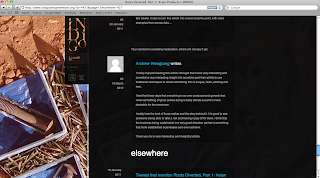Introduction
Hello all it has been
another full on crazy week with deadlines, new briefs, etc. For this blog I
will be showing some rough concepts for my sports team inspired by the Greek god
Hercules along with all of the other research that has been covered in the
blogs leading up to this one.
Sports Team
After a long time of
consideration I have finally decided on my sport and the type of team I want to
design a logo for. The logo that I will be designing is for the Australian
Olympic Rugby Sevens team.
At this point in time the team does not really exist but
will be a team that will be building up more popularity and support in the lead
up to the commonwealth games in 2014 and the Rio Olympic games in 2016. It may
surprise some to know that Rugby Union has not been in the Olympics since 1924.
Concept one
Copyright 2012 Andrew Weegberg
After using a new
method of brainstorming trialled in class I found my design going in another
direction. In this concept I have focussed on using Hercules Shield as a way of
framing the logo.
Unfortunately the look of the shield has been lost and not
many people would notice.
The design may look a
little boring but does serve a practical purpose in the fact that it will be
easy to reproduce on product like T-shirts (which is another consideration for
this logo) I do believe that more work needs to be done on this concepts to
develop it further to my usual high standard.
Concept Two
Copyright 2012 Andrew Weegberg
Once again I have
tried using the shield of Hercules to make the logo with no real success. In on
of my other thumbnails I wanted to incorporate the Southern Cross or the Eureka
flag in the logo with another shield shape. My only concern for doing this idea
is that I could not come up with many solutions that did not look like the
Melbourne Rebels logo which for those who don’t know in another Rugby Union
team.
I like this concept
better as the typography could be really strong. I do feel that more work is needed,
as this is nowhere near resolved just yet.
Concept Three
Copyright 2012 Andrew Weegberg
For this concept is
decided to try an incorporate an image of Hercules in the logo. I don’t want to
make it known that it is Hercules in the logo instead I have drawn warrior and
named the team the Warriors.
This refers directly to Hercules, as he was a
great warrior and seems appropriate for a team name, as most Australian animals
have been taken to name other Olympic/ National sporting teams.
Another reason
behind the name is that Rugby is a fierce and competitive sport played against
some big and somewhat scary nations. I thought it would be good to have a team
could sound and eventually look scary.
The addition of the
flag is something that would be good to have, as it is a very good source of
national pride. This is something that can be removed or left if the concepts
are developed further.
Possible typefaces
Headings
Dax Condensed
Fago Extended (Really
like this typeface)
Eureka Sans
Kievit Two (Really
Liked this typeface)
Meta Two
Signa
Celeste
Bodycopy
Meta Two
Celeste
Info Text
Rekord (would be good
for a sub head)
Schulbush
Zine Serif
Possible Colours
The Picture below is a very rough and basic representation of what the colours in the logo could look like. I do apologise for the kiddy style colouring in but it was meant to be a very quick and rough representation. More consideration will take place once the final design has been developed and decided on,
Copyright 2012 Andrew Weegberg
Green and gold
As this is an
Australian Olympic team the colours have sort have been chosen for me in
previous Olympic games and other national sports such as the Rugby world cup
the colours are always Green and Gold.
It is my intention to
use these colours in a way that appears different to colour schemes in the
past. The one major concern is to make sure it doesn’t look to similar to the
South African Olympic teams as they too have the same colours with different
variations.
Any feedback on any of
these rough concepts would be greatly appreciated. Please remember these are
very rough thumbnails that are still in the early stages of development.
Until next blog
Andrew Weegberg





